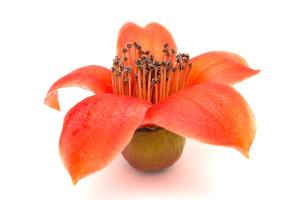When to Plant Tomatoes in Pacific Northwest
Tomatoes are a popular and versatile vegetable that can be grown in a variety of climates. In the Pacific Northwest, with its cool and rainy climate, knowing when to plant tomatoes is key to a successful harvest.
Climate of Pacific Northwest
The Pacific Northwest region, including states such as Washington, Oregon, and Idaho, experiences a moderate maritime climate with cool and wet winters and mild summers. The average temperature in this region during the summer is around 70°F. The climate is unpredictable and can vary from season to season.
Best Time to Plant Tomatoes in Pacific Northwest
The best time to plant tomatoes in the Pacific Northwest region is after the last frost has passed. This typically occurs in late April or early May. Planting too early can expose the plants to frost and low temperatures, which can damage or kill them.
It is also essential to keep in mind the weather conditions in the Pacific Northwest region. If you experience a particularly cold spring or late frost, it is best to wait until the weather warms up before planting your tomatoes.
Additionally, it is recommended to plant tomatoes when soil temperatures reach around 60°F. Planting in colder soil can lead to slower growth and an increased risk of disease. This can be achieved by using black plastic or other mulch to warm up the soil before planting your tomatoes.
Choosing Tomato Varieties for Pacific Northwest
When selecting tomato cultivars for the Pacific Northwest region, it is essential to consider their ability to withstand the cool and wet climate of the region. Some varieties that are well suited for this climate include Early Girl, Oregon Spring, and Siberia.
It is also essential to consider the length of the growing season for your tomato cultivar. The Pacific Northwest region has a shorter growing season than other regions, so selecting early-maturing cultivars or planting early will help ensure a successful harvest.
Caring for Tomatoes in Pacific Northwest
Once your tomato plants are in the ground, it is vital to care for them correctly. One of the most critical aspects of caring for tomatoes in the Pacific Northwest is providing them with sufficient water. The rainy climate can sometimes lead to overwatering, so it is important to monitor the soil's moisture levels regularly.
Fertilizing your tomato plants regularly can also enhance their growth and fruit production. Using a slow-release fertilizer can provide a consistent source of nutrients to your plants throughout the growing season.
Finally, it is essential to monitor your tomato plants for signs of disease or pest infestation. Keeping foliage dry and providing ample spacing between plants can help decrease the chances of disease. Additionally, regularly inspecting your tomato plants for pests such as aphids, tomato hornworms, and whiteflies can help prevent insect damage to your plants.
Conclusion
Growing tomatoes in the Pacific Northwest can be a challenging but rewarding experience. Knowing when to plant, selecting suitable cultivars, and caring for your tomato plants properly can help ensure a successful harvest.

 how many times do yo...
how many times do yo... how many planted tre...
how many planted tre... how many pine trees ...
how many pine trees ... how many pecan trees...
how many pecan trees... how many plants comp...
how many plants comp... how many plants can ...
how many plants can ... how many plants and ...
how many plants and ... how many pepper plan...
how many pepper plan...





























